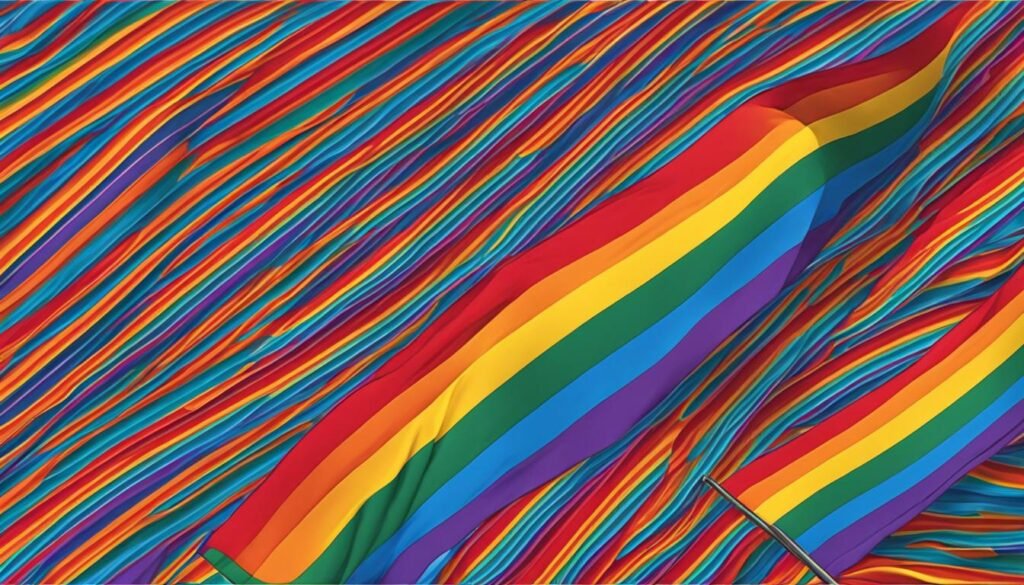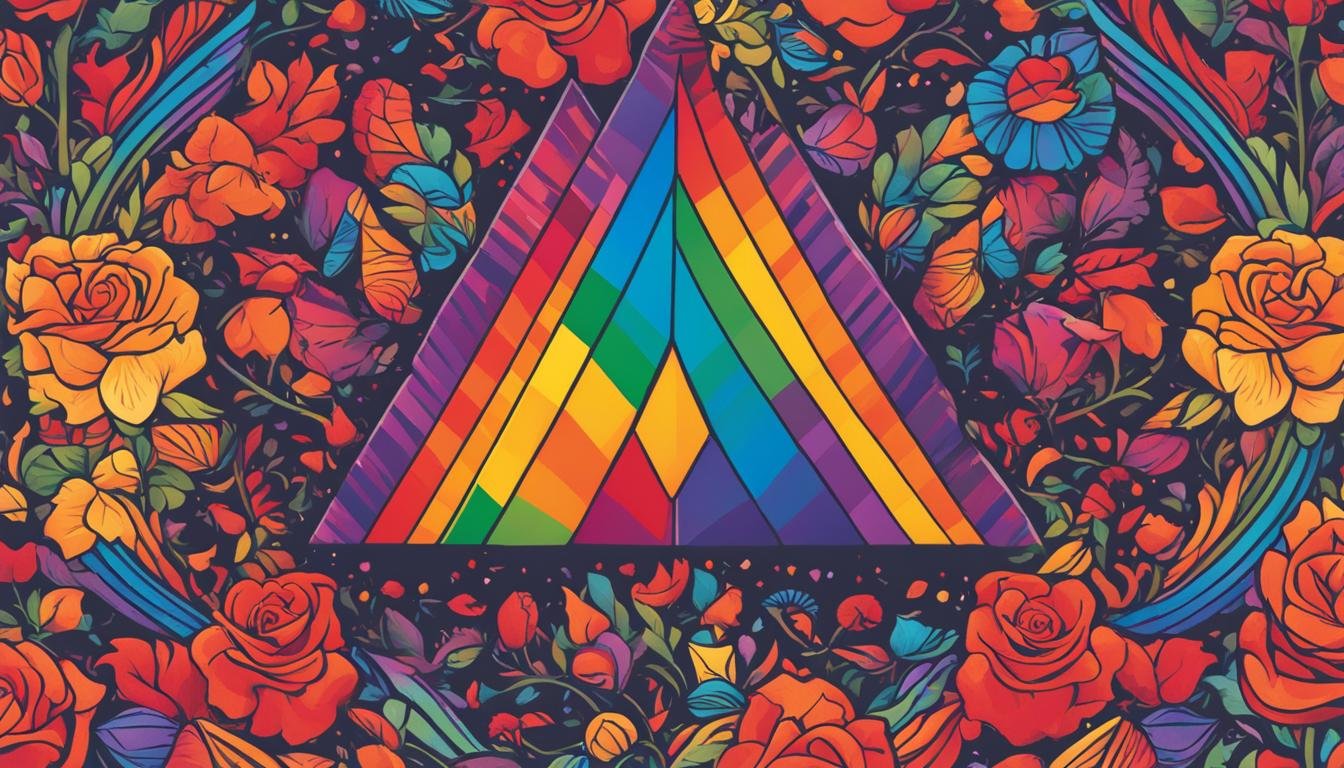In the world of LGBTQ+ culture, colors hold significant meaning and symbolism. They serve as powerful tools for self-expression, unity, and identity. From the vibrant rainbow flag to the ever-popular color purple, each hue carries its own story within the queer community.
One color that has long been associated with the LGBTQ+ community is purple. Its connection dates back to the 1800s when the shade mauve, a form of purple, gained popularity in the fashion industry. During this time, mauve became a symbol of same-sex desire and homosexuality, representing the community’s resilience and individuality.
Even today, purple continues to play a prominent role in LGBTQ+ pride flags. It is recognized globally as a symbol of the community, signifying love, acceptance, and empowerment. The history behind the color purple showcases how colors can transcend their visual appeal and become powerful symbols of identity and pride.
Key Takeaways:
- Purple has a significant history in LGBTQ+ culture, symbolizing same-sex desire and resilience.
- Purple continues to be prominently featured in LGBTQ+ pride flags as a symbol of love, acceptance, and empowerment.
- Colors hold great importance in the queer community, serving as tools of self-expression and identity.
- The rainbow flag, created in 1978, is an iconic symbol of LGBTQ+ unity and diversity.
- The colors of the rainbow flag, including red, orange, yellow, green, blue, and violet, each carry their own significance.
The LGBTQ+ Rainbow Flag and Its Meaningful Colors
The rainbow flag, created in 1978 by Gilbert Baker, has become an iconic symbol of the LGBTQ+ community. The flag consists of six colors: red, orange, yellow, green, blue, and violet. Each color carries its own significance. Red represents life, orange stands for healing, yellow symbolizes sunlight, green represents nature, blue signifies serenity, and violet represents spirit.
The rainbow flag is a powerful visual representation of unity, diversity, and inclusivity within the LGBTQ+ community, and it is widely recognized as a symbol of gay rights and solidarity. The flag has played a crucial role in advocating for LGBTQ+ rights around the world, serving as a symbol of visibility, acceptance, and pride. It has been used in protests, marches, and celebrations, and has become a unifying emblem for the community.
The Colors and Their Meanings
| Color | Meaning |
|---|---|
| Red | Life |
| Orange | Healing |
| Yellow | Sunlight |
| Green | Nature |
| Blue | Serenity |
| Violet | Spirit |
The LGBTQ+ rainbow flag is a powerful representation of the community’s resilience, diversity, and fight for equality. It continues to serve as a powerful symbol of solidarity and hope for LGBTQ+ individuals and allies worldwide.

Exploring Other LGBTQ+ Colors and Their Meanings
In addition to the iconic rainbow flag, the LGBTQ+ community has embraced a diverse array of colors to represent their identities and experiences. One color that holds significant meaning within the community is pink. Pink has long been associated with gay culture, particularly in fashion, and is often regarded as a symbol of femininity and same-sex desire.
Various combinations of colors also hold specific meanings for different sexual orientations and gender identities. For example, the colors blue, purple, and hot pink are commonly associated with bisexuality, while blue, yellow, and hot pink represent pansexuality. Asexual individuals often use the colors purple, white, grey, and black to represent their identity, while genderqueer individuals may opt for the colors purple, white, and green.
The significance of these colors goes beyond mere aesthetics; they serve as powerful visual symbols of diversity and inclusivity within the LGBTQ+ community. By embracing a wide range of colors and their meanings, individuals within the community are able to express themselves authentically and proudly.
FAQ
What is the significance of the color purple in LGBTQ+ culture?
The color purple has long been associated with the LGBTQ+ community and is considered one of the gayest colors. It dates back to the 1800s when the shade mauve gained popularity in the fashion industry and became a symbol of same-sex desire. Today, purple is prominently featured in LGBTQ+ pride flags and recognized globally as a symbol of the community.
What is the meaning behind the rainbow flag?
The rainbow flag, created in 1978 by Gilbert Baker, is an iconic symbol of the LGBTQ+ community. Each color carries its own significance – red represents life, orange stands for healing, yellow symbolizes sunlight, green represents nature, blue signifies serenity, and violet represents spirit. The rainbow flag represents unity, diversity, and inclusivity within the LGBTQ+ community.
Are there other colors with specific meanings within the LGBTQ+ community?
Yes, various colors hold significance within the LGBTQ+ community. Pink, for example, has long been associated with gay culture and is considered a symbol of femininity and same-sex desire. Additionally, specific combinations of colors represent different sexual orientations or gender identities, such as blue, purple, and hot pink for bisexuality, and blue, yellow, and hot pink for pansexuality. The community has embraced a wide range of colors to express their unique identities and experiences.

